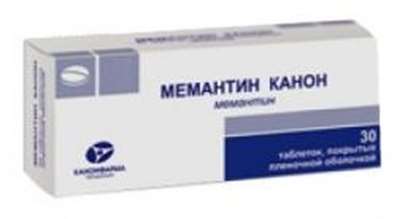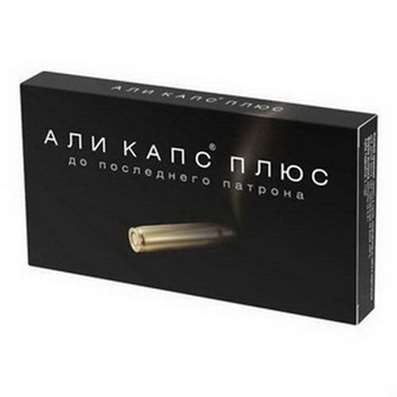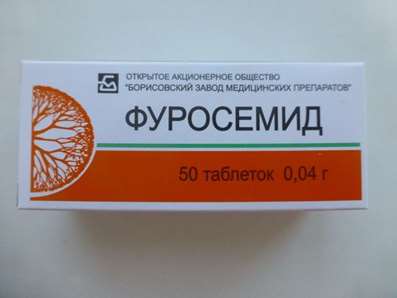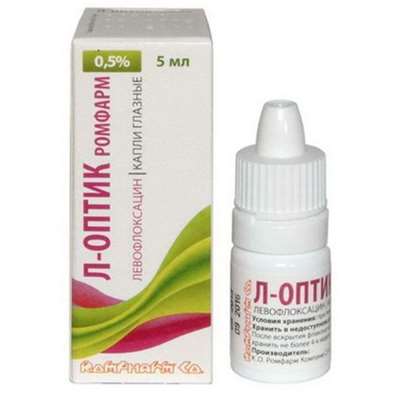Instruction for use: Alzepil
I want this, give me price
Active substance: Donepezil
Code ATX N06DA02 Donepezil
Pharmacological group
Means for the treatment of dementia, cholinesterase inhibitor [m-, n-cholinomimetics, incl. Anticholinesterase drugs]
Nosological classification (ICD-10)
F00 Dementia in Alzheimer's Disease (G30 +)
Alzheimer's dementia, Dementia in Alzheimer's disease
Composition
Tablets, coated with a film membrane 1 tab.
active substance:
Donepezil hydrochloride monohydrate 5.21 mg
10.42 mg
(Corresponds to donepezil hydrochloride - 5 or 10 mg)
Auxiliary substances: MCC - 96/192 mg; Hydroxypropyl cellulose with a low degree of substitution (L-HPC B1) - 24/48 mg; Magnesium stearate - 1/2 mg; Opadry Y-1-7000 white (hypromellose -1.875 / 3.75 mg, titanium dioxide 0.9375 / 1.875 mg, macrogol 400 0.1875 / 0.375 mg) 3/6 mg
To the beginning ^
Description of dosage form
Tablets, 5 mg: white or almost white, round, biconvex, covered with a film shell, without or almost no odor, with engraved "E 381" on one side.
Tablets, 10 mg: white or almost white, round, biconvex, covered with a film shell, without or almost odorless, with engraved "E 382" on one side.
pharmachologic effect
Pharmacological action - anticholinesterase, m-n-cholinomimetic.
Pharmacodynamics
Donepezil is a selective and reversible inhibitor of acetylcholinesterase, which is the main predominant type of cholinesterase in the brain. Donepezil inhibits this enzyme more than 1000 times stronger than butylcholine esterase, an enzyme that is located mainly outside the CNS.
A single dose of 5 or 10 mg in the equilibrium state is accompanied by inhibition of cholinesterase activity (estimated on the model of erythrocyte membranes) by 63.6 and 77.3%, respectively. The ability of donepezil hydrochloride to inhibit the activity of erythrocyte cholinesterase correlates with changes in the results on the ADAS-cog scale, which is a sensitive tool for assessing changes in cognitive function. The ability of donepezil hydrochloride to change the course of concomitant neurologic changes has not been investigated. Thus, it can not be considered that donepezil affects the progression of the disease.
The efficacy of donepezil was investigated in four placebo-controlled trials, two six-month and two-year trials.
In a six-month clinical trial, the analysis was performed using three performance criteria after completion of donepezil administration. The ADAS-cog (cognitive function score) scale was used; A scale of impressions of the clinician about changes based on interviews and data obtained from carers of the patient (an indicator of the overall level of function); The subscale of the daily activity of the clinical scale of the evaluation of dementia (an indicator of the patient's ability to participate in the life of society, to do household chores, to do things, to serve himself).
Donepezil hydrochloride caused a dose-dependent, statistically significant increase in the percentage of patients who were recognized as responsible for the treatment.
Pharmacokinetics
Suction. Cmax donepezila in blood plasma after oral administration are reached after about 3-4 hours. Concentrations in plasma and AUC increase in proportion to the dose. T1 / 2 is approximately 70 hours and the systematic use of single doses leads to the achievement of an equilibrium state, which is achieved within 3 weeks after the initiation of therapy. In the equilibrium state, donepezil concentration in plasma and the corresponding pharmacodynamic activity vary slightly during the day. Taking food does not affect the absorption of donepezil.
Distribution. The connection with plasma proteins is 95%. The relationship with the plasma proteins of the active metabolite - 6-O-desmethyldonepezil - is unknown.
The distribution of donepezil in tissues has not been specifically studied. In one study involving healthy male volunteers, it was found that after a single dose of 5 mg of labeled 4C-donepezil hydrochloride, approximately 28% of the dose was determined in the body 240 h after administration. This indicates that donepezil and / or its metabolites can persist in the body for more than 10 days.
Biotransformation / excretion. Donepezil is excreted by the kidneys in both unchanged form and in the form of numerous metabolites formed by cytochrome P450 enzymes, not all of which have been identified. After a single dose of 5 mg of labeled 14C-donepezil hydrochloride, the concentration of unchanged donepezil in plasma is 30% of the dose taken, 6-O-desmethyldone-peryl is 11% (the only metabolite having similar activity with donepezil hydrochloride), donepezil-cis-N-oxide - 9%, 5-O-desmethyldonepezil - 7% and glucuronide of the conjugate 5-O-desmethyldonepezil - 3%. Approximately 57% of the administered dose was found in urine (17% unchanged) and 14.5% in feces, on the basis of which it was concluded that biotransformation and excretion by the kidneys is the primary way of elimination. There are no data confirming the enterohepatic recirculation of donepezil and / or its metabolites.
T1 / 2 donepezil is about 70 h.
Sex, ethnicity and smoking do not significantly affect the concentration of donepezil in plasma. Donepezil pharmacokinetics was not formally studied in healthy elderly patients, nor in patients with dementia of Alzheimer's type or vascular dementia. However, the average concentration of donepezil in blood plasma in these patients corresponded to the concentration determined in healthy volunteers.
In patients with mild or moderate impairment of liver function, elevated equilibrium concentrations of donepezil in blood plasma can be observed.
Indications
Symptomatic treatment of dementia of the Alzheimer's type of mild and moderate degree.
Contraindications
Hypersensitivity (including piperidine derivatives) and any of the excipients;
Children under 18 years of age (due to lack of clinical data).
pregnancy and lactation
The experience of using the drug during pregnancy and during breastfeeding is absent. Studies on animals did not reveal the teratogenic effect of donepezil, but peri- and postnatal toxicity was established. The potential risk to humans is unknown. Therefore, Alzepyl® should not be used during pregnancy, unless it is absolutely necessary.
In rats, donepezil is excreted with milk. It is not known whether the drug is excreted in breast milk, such studies have not been conducted. If it is necessary to take the drug during lactation, it is necessary to resolve the issue of stopping breastfeeding.
Side effects
The most common adverse events are diarrhea, muscle cramps, fatigue, nausea, vomiting and insomnia. There was also reported dizziness, headache, pain, accidents and colds. In most cases, these phenomena pass and do not require discontinuation of the drug. Depending on the frequency, side effects are defined as follows: very often (≥1 / 10); Often (≥1 / 100 - ≤1 / 10); Infrequently (≥1 / 1000 - ≤1 / 100); Rarely (≥1 / 10000 - ≤1 / 1000); Very rarely (≤1 / 10000) or observed with an unknown frequency (it is impossible to estimate from the available data).
Infections and parasitic diseases: often - runny nose.
From the side of metabolism and nutrition: often - anorexia.
Disorders of the psyche: often - hallucinations **, agitation **, aggressive behavior **, abnormal dreams, nightmarish dreams **.
From the nervous system: often - fainting *, dizziness, insomnia; Infrequently - convulsive attacks *, rarely - extrapyramidal symptoms; Very rarely - malignant neuroleptic syndrome.
From the heart: infrequently bradycardia; Rarely - sinoatrial blockade, AV blockade.
From the digestive tract: very often - diarrhea, nausea; Often - vomiting, indigestion; Infrequently - bleeding from the digestive tract, ulcers of the stomach and duodenum.
From the side of the liver and bile ducts: rarely - a violation of liver function, incl. hepatitis***.
From the skin and subcutaneous tissue: often - a rash, itchy skin.
From the musculoskeletal and connective tissue: often - muscle spasms; Very rarely - rhabdomyolysis ****.
From the side of the kidneys and urinary tract: often - urinary incontinence.
General disorders and disorders at the injection site: very often - headache; Often fatigue, pain.
Influence on the results of laboratory and instrumental studies: infrequently - a slight increase in the concentration of muscle creatine kinase in the blood serum.
Trauma, intoxication and complications of manipulation: often - an accident.
* When examining patients with syncope or convulsive seizures, the possibility of cardiac blockade or prolonged sinus pauses should be considered.
** In reported cases of hallucinations, agitation and aggressive behavior, abnormal dreams and nightmares, these manifestations ceased after a dose reduction or drug withdrawal.
*** If there is a violation of the liver function of the unexplained etiology, the possibility of abolishing Alzepyl® should be considered.
**** There were reports of rhabdomyolysis. Which developed independently of the malignant neuroleptic syndrome, in close temporal connection either with the onset of donepezil, or with an increase in the dose.
Reports of adverse reactions
Providing data on the alleged adverse reactions of the drug is very important, allowing continuous monitoring of the risk / benefit ratio of drugs. Medical workers should be provided with information on any suspected adverse reactions at the contacts indicated at the end of the instruction, as well as through the national information collection system.
Interaction
Donepezil and / or its metabolic products do not inhibit the metabolism of theophylline, warfarin, cimetidine, digoxin. The simultaneous administration of digoxin or cimetidine does not affect the metabolism of donepezil.
The use of donepezil simultaneously with levodopa / carbidopa for 21 days did not affect the concentration of these drugs in the blood.
In vitro studies have shown that in the metabolism of donepezil, cytochrome P450-CYP3A4 isozymes and, to a lesser extent, CYP2D6, are involved.
Ketoconazole and quinidine, which are inhibitors of CYP3A4 and CYP2D6, respectively, suppress the metabolism of donepezil. Consequently, these and other CYP3A4 inhibitors, such as itraconazole and erythromycin, and CYP2D6 inhibitors, such as fluoxetine, can inhibit donepezil metabolism. In healthy volunteers, ketoconazole increased mean concentrations of donepezil by approximately 30%.
Inducers of enzymes such as rifampicin, phenytoin, carbamazepine and ethanol can cause a decrease in donepezil levels. Since the degree of such inhibitory or inducing action is unknown, it is necessary to use these agents in combination with donepezil with caution.
Donepezil has an effect on the effect of drugs that have anticholinergic activity. In addition, with simultaneous use, donepezil can enhance the action of succinylcholine, other muscle relaxants or agonists of cholinergic receptors and beta-blockers that affect the conductivity of the heart.
Dosing and Administration
Inside, in the evening, before bed.
Adults / elderly patients. Treatment begins with taking 5 mg 1 time per day and continues for at least 4 weeks to reach Css donepezil and assess the early clinical effect of therapy.
After 1 month, the dose of Alzepyl® can be increased to the maximum recommended daily dose - 10 mg 1 time per day. Doses exceeding 10 mg / day in clinical trials have not been studied.
Treatment should be started and carried out under the supervision of a doctor who has experience in the diagnosis and treatment of Alzheimer's dementia. The diagnosis should be based on accepted recommendations, for example DSM IV, ICD 10.
Treatment donepezilom can begin only in the presence of persons caring for the patient, able to regularly monitor the intake of the drug.
Supportive therapy can be continued as long as there is a therapeutic effect that should be regularly evaluated. In the absence of a therapeutic effect, treatment should be considered.
Impaired renal and hepatic function. Patients with impaired renal function do not need to change the treatment regimen, because This condition does not affect the clearance of donepezil.
In connection with the possible increase in exposure for mild or moderate liver dysfunction, the dose should be increased taking into account individual tolerability. There are no data on the use of the drug in patients with severe impairment of liver function.
Children and teenagers. The drug Alzepil® is not intended for the treatment of children and adolescents.
Overdose
According to current estimates, the median lethal dose of donepezil hydrochloride after single ingestion in mice and rats is 45 and 32 mg / kg, respectively, which is approximately 225 and 160 times higher than the maximum recommended dose for humans at 10 mg / kg / day. The animals had dose-dependent signs of stimulation of the cholinergic system, including decreased spontaneous mobility, the position of the body with the face, staggering gait, lacrimation, clonic convulsions, respiratory depression, salivation, miosis, fasciculation, and a decrease in body surface temperature.
Symptoms: an overdose of cholinesterase inhibitors can lead to a cholinergic crisis characterized by severe nausea, vomiting, drooling, sweating, bradycardia, hypotension, respiratory depression, collapse and seizures. Muscle weakness may increase, which can lead to death in the defeat of the respiratory muscles.
Treatment: as in any case of an overdose, general supportive treatment should be prescribed. Tertiary anticholinergics, for example atropine, can be used as antidotes for an overdose of Alzepyl®. Intravenous administration of atropine sulfate in increasing doses is recommended before the effect is achieved: first 1-2 mg / kg IV, followed by additional doses depending on the clinical response. Atypical reactions of blood pressure and heart rate were recorded when other cholinomimetics were introduced together with quaternary anticholinergic drugs, for example glycopyrrolate. It is unknown whether Donepezil hydrochloride and / or its metabolites can be removed by dialysis (hemodialysis, peritoneal dialysis or hemofiltration).
special instructions
The efficacy of donepezil is not established in patients with severe Alzheimer's dementia, other dementia or memory impairment (eg, with an age-related decline in cognitive function).
Alzepil® is an inhibitor of cholinesterase, and therefore it can enhance succinylcholine muscle relaxation during anesthesia.
Cardiovascular disorders. Cholinesterase inhibitors, in connection with their pharmacological action, may have vagotonic effects on the heart rate (for example, cause bradycardia).
The possibility of such an action should be especially taken into account in case of weakness of the sinus node or other violations of supraventricular conduction in the heart, for example, with sinoatrial or atrioventricular blockade.
There were reports of fainting and convulsive seizures. When examining such patients, one should consider the possibility of cardiac blockade or long pauses in the sinus rhythm.
Dysfunction of the gastrointestinal tract. Patients with an increased risk of developing ulcers, such as having a history of peptic ulcer disease or receiving concomitant treatment with NSAIDs need to be monitored to detect symptoms of ulceration. However, clinical trials of donepezil, in comparison with placebo, did not reveal an increase in the incidence of peptic ulcers or gastrointestinal bleeding.
Genitourinary system. Cholinomimetics can cause a disturbance of urine outflow from the bladder, but such effects were not observed in the clinical trials donepezil.
Neurological conditions. It is believed that holinomimetiki have some propensity to provoke generalized convulsive seizures. However, convulsive activity may also be a manifestation of Alzheimer's disease.
Cholinomimetics can exacerbate or cause extrapyramidal symptoms.
Malignant neuroleptic syndrome. Malignant neuroleptic syndrome is a potentially life-threatening disorder characterized by hyperthermia (fever), muscle rigidity, autonomic nervous system disorders, altered consciousness, elevated levels of serum creatinine phosphokinase. Additional symptoms may include myoglobinuria (rhabdomyolysis) and acute renal failure.
There are very rare reports of the development of malignant neuroleptic syndrome associated with the use of donepezil, especially in patients also receiving concomitant therapy with antipsychotic drugs.
If the patient develops signs and symptoms of a malignant neuroleptic syndrome or if an unexplained high temperature is present without additional clinical manifestations, treatment should be discontinued.
Dysfunction of the lungs. Cholinesterase inhibitors, in connection with their pharmacological action, should be administered with caution to patients who have a history of asthma or obstructive pulmonary disease. Simultaneous administration of Alzepyl® and other acetylcholinesterase inhibitors, as well as agonists or antagonists of the cholinergic system, should be avoided.
Severe liver dysfunction. There are no data on the use of the drug in patients with severe impairment of liver function.
Mortality in clinical studies of vascular dementia. Three clinical trials with a duration of 6 months were conducted with the participation of patients meeting the criteria of NINDS-AIREN for possible or probable vascular dementia (DM). The NINDS-AIREN criteria are designed to identify patients in whom dementia may be associated only with vascular causes and exclusion of patients with Alzheimer's disease.
In the first study, the incidence of death was 2/198 (1%) in the group receiving 5 mg of donepezil, 5/206 (2.4%) in the group receiving 10 mg of donepezil, and 7/199 (3.5%) in the Placebo group. In the second study, the incidence of death was 4/208 (1.9%) in the group receiving 5 mg of donepezil, 3/215 (1.4%) in the group receiving 10 mg of donepezil and 1/193 (0.5% ) In the placebo group. In the third study, the incidence of death was 11/648 (1.7%) in the group receiving 5 mg of donepezil, and 0/326 (0%) in the placebo group. The incidence of death in all groups receiving donepezil in three studies of diabetes (1.7%) was numerically higher than in the placebo group (1.1), but this difference was not statistically significant.
Most deaths of patients taking donepezil hydrochloride or placebo resulted from various vascular disorders that are expected in this population of elderly persons with concomitant vascular lesions. The analysis of all serious non-fatal and fatal vascular disorders did not reveal a difference in the incidence of their occurrence in the groups receiving donepezil and placebo.
In pooled studies of Alzheimer's disease (n = 4146), as well as the same studies of Alzheimer's disease with the addition of studies of vascular dementia (the total number of patients 6888), the death rates in placebo groups are numerically superior to those in the group treated with donepezil hydrochloride.
Influence on ability of driving of vehicles and management of mechanisms. Donepezil in an insignificant or medium degree affects the ability to manage motor vehicles and work with mechanisms. Dementia Alzheimer's type itself can be accompanied by a violation of the ability to drive and use machinery. The question of the ability of a patient with Alzheimer's dementia during taking donepezil to drive a car or use complex equipment should be decided by the doctor after assessing the patient's individual response to treatment.
Relies Form
Tablets, film-coated, 5 mg and 10 mg. According to Table 14. In a blister of polyamide / aluminum foil or of PVC / PVDC / aluminum foil. 2 or 4 bl. Packed in a cardboard box.
Terms of leave from pharmacies
On prescription.
storage Conditions
At a temperature not exceeding 30 ° C.
Keep out of the reach of children.
Shelf life
5 years.
Do not use after the expiry date printed on the package.

 Cart
Cart





